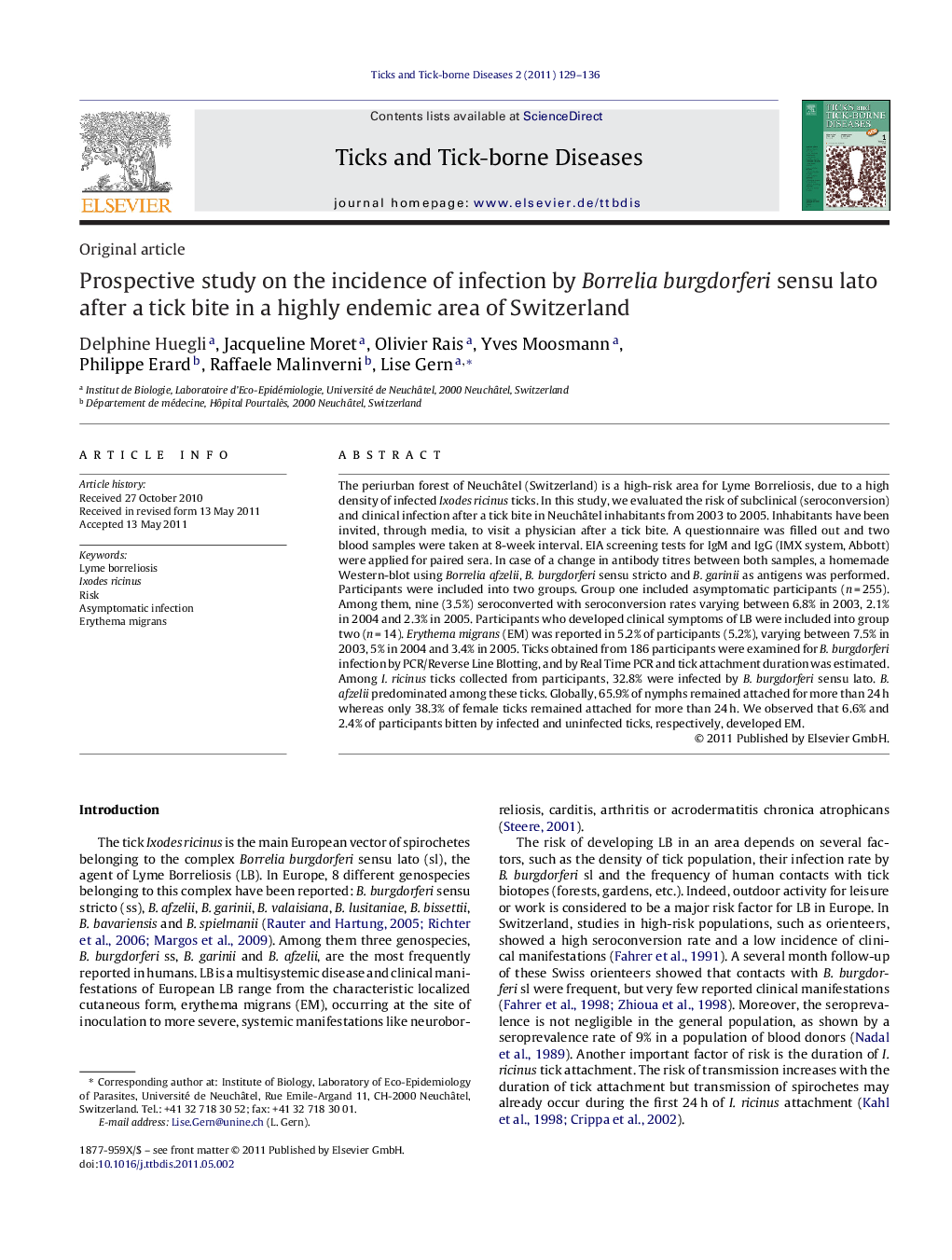| Article ID | Journal | Published Year | Pages | File Type |
|---|---|---|---|---|
| 2473949 | Ticks and Tick-borne Diseases | 2011 | 8 Pages |
The periurban forest of Neuchâtel (Switzerland) is a high-risk area for Lyme Borreliosis, due to a high density of infected Ixodes ricinus ticks. In this study, we evaluated the risk of subclinical (seroconversion) and clinical infection after a tick bite in Neuchâtel inhabitants from 2003 to 2005. Inhabitants have been invited, through media, to visit a physician after a tick bite. A questionnaire was filled out and two blood samples were taken at 8-week interval. EIA screening tests for IgM and IgG (IMX system, Abbott) were applied for paired sera. In case of a change in antibody titres between both samples, a homemade Western-blot using Borrelia afzelii, B. burgdorferi sensu stricto and B. garinii as antigens was performed. Participants were included into two groups. Group one included asymptomatic participants (n = 255). Among them, nine (3.5%) seroconverted with seroconversion rates varying between 6.8% in 2003, 2.1% in 2004 and 2.3% in 2005. Participants who developed clinical symptoms of LB were included into group two (n = 14). Erythema migrans (EM) was reported in 5.2% of participants (5.2%), varying between 7.5% in 2003, 5% in 2004 and 3.4% in 2005. Ticks obtained from 186 participants were examined for B. burgdorferi infection by PCR/Reverse Line Blotting, and by Real Time PCR and tick attachment duration was estimated. Among I. ricinus ticks collected from participants, 32.8% were infected by B. burgdorferi sensu lato. B. afzelii predominated among these ticks. Globally, 65.9% of nymphs remained attached for more than 24 h whereas only 38.3% of female ticks remained attached for more than 24 h. We observed that 6.6% and 2.4% of participants bitten by infected and uninfected ticks, respectively, developed EM.
